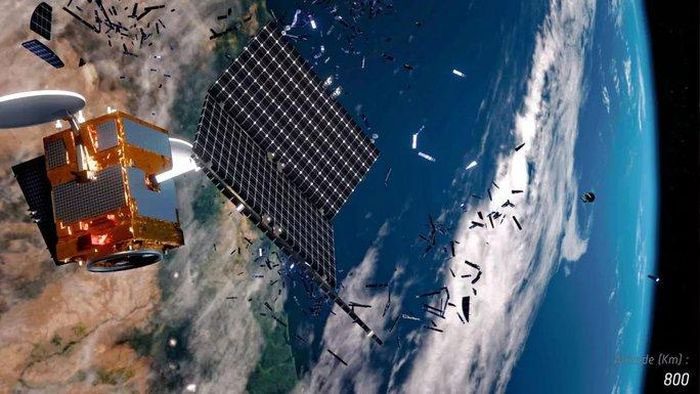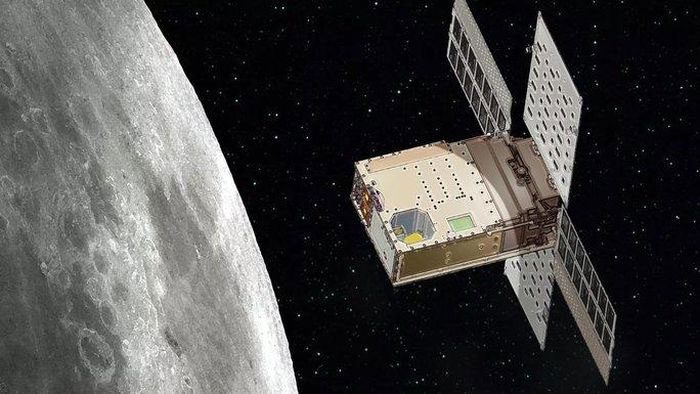Devices from two major space agencies, Russia and the United States, have continuously encountered issues in Earth’s orbit, with the cause of the Russian satellite’s disintegration still unclear.
Russian Satellite Breaks Apart in Orbit
According to Science Alert, the 18th Space Defense Squadron from the U.S. Space Force’s Delta 2 Unit reported that they are monitoring 85 individual pieces of debris at an altitude of 1,169 km above the Earth, believed to have been released into space since January 4 due to the unexpected breakup of the Russian satellite KOSMOS 2499.

A shattered satellite in orbit – (Graphic image from ESA).
Astronomer Jonathan McDowell from the Harvard-Smithsonian Center for Astrophysics noted that this is the second fragmentation event recorded for this type of satellite. Another similar incident occurred on October 23, 2021, creating 22 trackable pieces of debris.
Information on the official website of the Moscow Institute of Physics and Technology (Russia) indicates that this satellite was designed to test plasma propulsion/electrostatic thruster technology.
Both fragmentation events have not reached a clear conclusion, but the most likely predicted cause is a self-destructing propulsion system. A similar satellite, KOSMOS 2491, also exploded in 2020.
According to Space, during a press conference in 2014 regarding the launch of KOSMOS 2491 (December 2013), the head of the Russian Space Agency (Roscosmos) at the time, Oleg Ostapenko, stated that this experimental satellite was a collaborative product between Roscosmos and the Russian Academy of Sciences, intended for peaceful purposes, including unspecified research by educational institutions.
NASA’s Lunar Probe “Stuck” in Earth’s Orbit
NASA has also encountered an issue with the Lunar Flashlight, a small probe launched in December 2022, aimed at reaching lunar orbit to search for signs of frozen water.

Lunar Flashlight probe – (Graphic image from NASA).
However, the cubesats on the probe, which utilize a type of “green” fuel for testing, have encountered problems. 3 out of 4 cubesats are not functioning as expected, and after several attempts, the probe remains “stuck” in Earth’s orbit.
NASA has announced a new plan to “redirect” this unfortunate spacecraft. Instead of operating in lunar orbit, it will aim to achieve a higher Earth orbit, allowing it to pass by the Moon monthly to observe the southern pole of this celestial body.


















































